Themed collection Horizons Community Board Collection: Optical and Photonic Materials

Horizons Community Board collection: optical and photonic materials
Nanoscale Horizons Community Board members Xiaolu Zhuo and Qingchen Dong and Materials Horizons Community Board member Li Na Quan introduce this Horizons Community Board collection on materials and devices for optics and photonics.
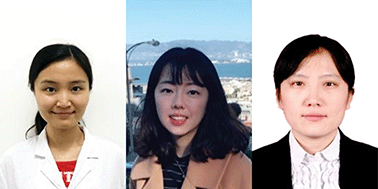
Nanoscale Horiz., 2021,6, 936-938
https://doi.org/10.1039/D1NH90046C
Switching to the brighter lane: pathways to boost the absorption of lanthanide-doped nanoparticles
The use of organic dyes, semiconductors, and plasmonic nanostructures are three of the most promising strategies to make lanthanide-doped nanoparticles brighter by means of increasing their absorption capabilities.
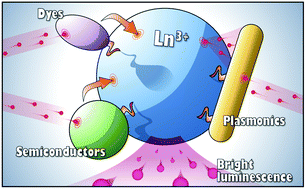
Nanoscale Horiz., 2021,6, 209-230
https://doi.org/10.1039/D0NH00627K
Technology progress on quantum dot light-emitting diodes for next-generation displays
This article focuses on state-of-the-art technologies used in the research on materials, devices and processes to achieve high-performance QD-LEDs.
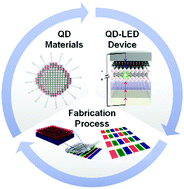
Nanoscale Horiz., 2021,6, 68-77
https://doi.org/10.1039/D0NH00556H
Thermally assisted delayed fluorescence (TADF): fluorescence delayed is fluorescence denied
Thermally assisted delayed fluorescence (TADF) allows for efficient collection of both singlet and triplet excitons with both emitting through the singlet channel. TADF opens the door to photo- and electroluminescence efficiencies close to 100%.
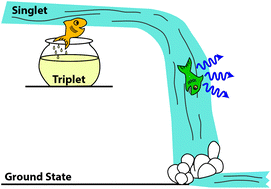
Mater. Horiz., 2020,7, 1210-1217
https://doi.org/10.1039/D0MH00276C
Small-angle X-ray scattering of nanoporous materials
Schematic of the general process of small-angle X-ray scattering acquisition, fitting, and modeling to determine material parameters of nanoporous materials.
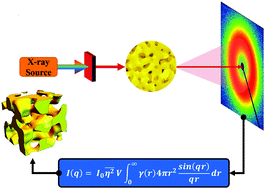
Nanoscale Horiz., 2020,5, 12-24
https://doi.org/10.1039/C9NH00347A
Luminescent copper indium sulfide (CIS) quantum dots for bioimaging applications
This review covers the main applications of copper indium sulfide quantum dots for bioimaging applications.

Nanoscale Horiz., 2021,6, 676-695
https://doi.org/10.1039/D1NH00260K
Recent developments in polydopamine fluorescent nanomaterials
Polydopamine (PDA) fluorescent materials have recently gained much attention due to their unique physicochemical and biological properties.
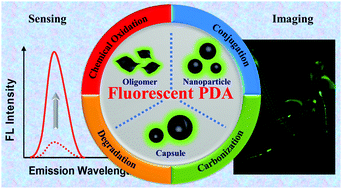
Mater. Horiz., 2020,7, 746-761
https://doi.org/10.1039/C9MH01197H
Detecting triplet states in opto-electronic and photovoltaic materials and devices by transient optically detected magnetic resonance
We present a transient ODMR technique to detect and distinguish triplet states in opto-electronic and photovoltaic materials and devices.
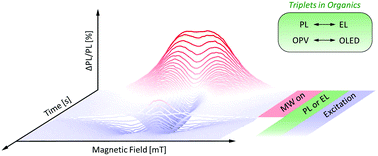
Mater. Horiz., 2021,8, 2569-2575
https://doi.org/10.1039/D1MH00999K
Visible-blind ultraviolet narrowband photomultiplication-type organic photodetector with an ultrahigh external quantum efficiency of over 1 000 000%
The new concept of fabricating high-performance visible-blind narrowband UV photomultiplication-type organic photodetectors provides a necessary prerequisite for flexible wearable UV monitoring and other promising applications.

Mater. Horiz., 2021,8, 2293-2302
https://doi.org/10.1039/D1MH00776A
A dual responsive photonic liquid for independent modulation of color brightness and hue
The brightness and hue of structural colors can be independently, continuously, and reversibly tuned in an aqueous suspension containing Fe3O4@poly(N-isopropyl acrylamide) flexible photonic nanochains by changing the magnetic field and temperature.
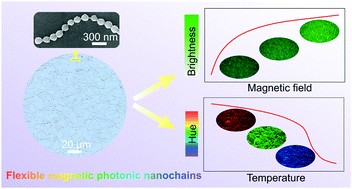
Mater. Horiz., 2021,8, 2032-2040
https://doi.org/10.1039/D1MH00556A
Are the rates of dexter transfer in TADF hyperfluorescence systems optically accessible?
Dexter quenching is a likely loss mechanism in hyperfluorescent OLEDS, but changes in delayed emission kinetics in analogous optical experiments come from something else.
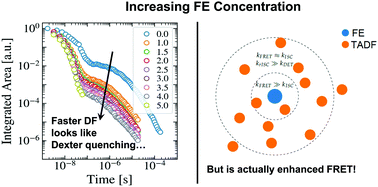
Mater. Horiz., 2021,8, 1805-1815
https://doi.org/10.1039/D0MH01666G
Tetrazine molecules as an efficient electronic diversion channel in 2D organic–inorganic perovskites
Taking advantage of an innovative design concept, we present the synthesis of two novel two-dimensional (2D) hybrid organic–inorganic halide perovskites incorporating for the first time 100% of a photoactive tetrazine derivative as the organic component.
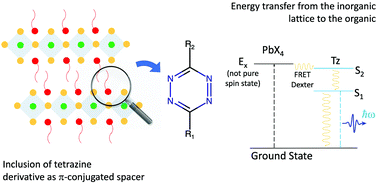
Mater. Horiz., 2021,8, 1547-1560
https://doi.org/10.1039/D0MH01904F
Linking optical spectra to free charges in donor/acceptor heterojunctions: cross-correlation of transient microwave and optical spectroscopy
Quantitative cross-correlation of time-resolved spectroscopies in the visible/near-IR and microwave regions provides deeper understanding of photoinduced charge separation across donor/acceptor heterojunctions than either technique alone.
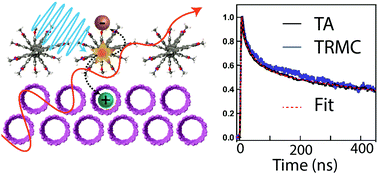
Mater. Horiz., 2021,8, 1509-1517
https://doi.org/10.1039/D0MH01810D
Unsupervised structure classes vs. supervised property classes of silicon quantum dots using neural networks
Scientific intuition can help anticipate the outcome of experiments, but machine learning based on data does not always support these assumptions. A direct comparison of human intelligence (HI) and AI suggests domain knowledge is not always enough.
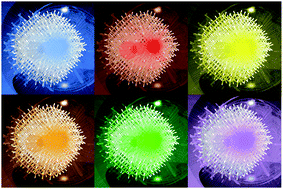
Nanoscale Horiz., 2021,6, 277-282
https://doi.org/10.1039/D0NH00637H
High-performance tricolored white lighting electroluminescent devices integrated with environmentally benign quantum dots
Tricolored white lighting quantum dot-light-emitting diodes comprising three environmentally benign primary color emitters of II–VI blue and green ZnSeTe and I–III–VI red Zn–Cu–In–S QDs are demonstrated.
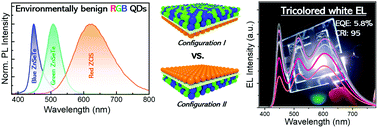
Nanoscale Horiz., 2021,6, 168-176
https://doi.org/10.1039/D0NH00606H
Near-infrared small molecule coupled with rigidness and flexibility for high-performance multimodal imaging-guided photodynamic and photothermal synergistic therapy
A simple π-conjugated oligomer nanotheranostic with intrinsic multifunctionality was developed for 808 nm laser-triggered effective NIR-II fluorescence/photoacoustic imaging and photodynamic/photothermal synergistic therapy.
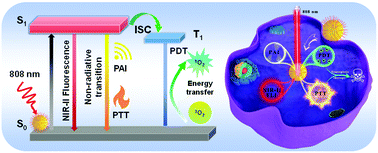
Nanoscale Horiz., 2021,6, 177-185
https://doi.org/10.1039/D0NH00672F
Anisotropic 2D excitons unveiled in organic–inorganic quantum wells
Hybrid layered metal chalcogenide crystalline polymer hosts strongly anisotropic two-dimensional excitons with large binding energies.
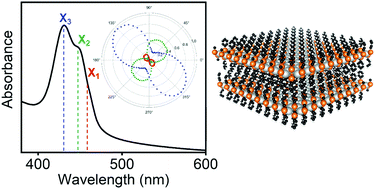
Mater. Horiz., 2021,8, 197-208
https://doi.org/10.1039/C9MH01917K
Photo-induced crystallization with emission enhancement (PICEE)
A new photoactivation mechanism, photo-induced crystallization with emission enhancement, is developed based on an isoquinolinium salt with applications in mitochondria-targeting and photodynamic therapy.

Mater. Horiz., 2020,7, 3005-3010
https://doi.org/10.1039/D0MH01200A
Highly efficient and stable hybrid quantum-dot light-emitting field-effect transistors
A red quantum-dot light-emitting transistor with an EQE of 22.8% and a field-effect mobility of 3.1 cm2 V−1 s−1 is demonstrated.
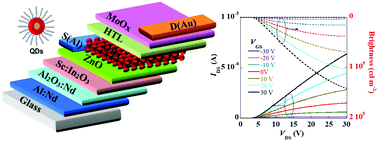
Mater. Horiz., 2020,7, 2439-2449
https://doi.org/10.1039/D0MH00951B
Gold nanonails for surface-enhanced infrared absorption
Colloidal gold nanonails, exhibiting large electric field enhancement in the mid-infrared region, are synthesized for surface-enhanced infrared absorption (SEIRA).
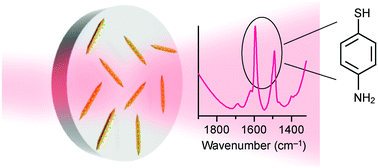
Nanoscale Horiz., 2020,5, 1200-1212
https://doi.org/10.1039/D0NH00244E
Finally, inkjet-printed metal halide perovskite LEDs – utilizing seed crystal templating of salty PEDOT:PSS
Light-emitting diodes with an inkjet-printed active layer based on MAPbBr3 perovskite are produced for the first time.
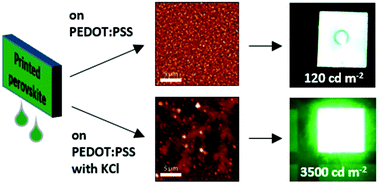
Mater. Horiz., 2020,7, 1773-1781
https://doi.org/10.1039/D0MH00512F
Biogenic fluorescent protein–silk fibroin phosphors for high performing light-emitting diodes
This work presents a new family of bio-hybrid light-emitting diodes (Bio-HLEDs) using all-bio color down-converting coatings that combine silk fibroin (SF) as a packaging matrix and fluorescent proteins (FPs) as emitters.
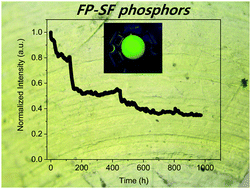
Mater. Horiz., 2020,7, 1790-1800
https://doi.org/10.1039/D0MH00503G
Optical microresonator arrays of fluorescence-switchable diarylethenes with unreplicable spectral fingerprints
Photochromic microresonator arrays with whispering gallery mode fingerprints are successfully prepared, which function as high-security optical authentication microdevices.
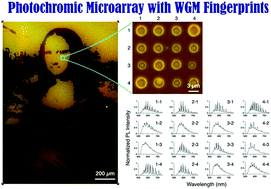
Mater. Horiz., 2020,7, 1801-1808
https://doi.org/10.1039/D0MH00566E
Solution-processed one-dimensional CsCu2I3 nanowires for polarization-sensitive and flexible ultraviolet photodetectors
We demonstrated a polarization-sensitive and flexible ultraviolet photodetector based on one-dimensional CsCu2I3 nanowires with a photocurrent anisotropy ratio of 3.16.
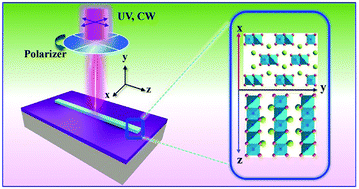
Mater. Horiz., 2020,7, 1613-1622
https://doi.org/10.1039/D0MH00250J
Lead-free, stable, high-efficiency (52%) blue luminescent FA3Bi2Br9 perovskite quantum dots
Lead-free Bi-based perovskite FA3Bi2X9 (X = Cl, Br, and I) quantum dots (QDs) are synthesized for the first time at room temperature. The ligand-passivated FA3Bi2Br9 QDs exhibit blue emission at 437 nm with photoluminescence quantum yield (PLQY) up to 52%.
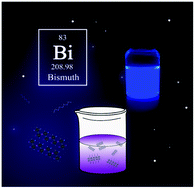
Nanoscale Horiz., 2020,5, 580-585
https://doi.org/10.1039/C9NH00685K
When nanocellulose meets diffraction grating: freestanding photonic paper with programmable optical coupling
Bio-inspired chiral nematic cellulose films with periodic surface grating structures exhibit optically programmable photonic–photonic coupling.
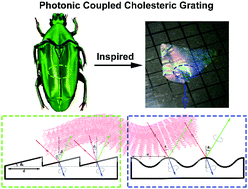
Mater. Horiz., 2020,7, 511-519
https://doi.org/10.1039/C9MH01485C
Bright and fast scintillation of organolead perovskite MAPbBr3 at low temperatures
Scintillators detect ionising radiation by converting energy deposited in them to a proportional number of photons. They are omnipresent in large-scale technical applications around us. Here, we report excellent scintillation properties of perovskites at low temperatures providing the potential for a new generation of cryogenic scintillators. One intriguing option would be replacing current medical scintillation detectors with cryogenic perovskites that could achieve higher imaging resolutions, for example for diagnosing early-stage brain cancer.
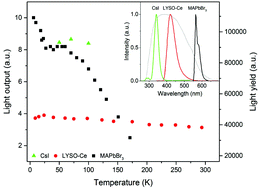
Mater. Horiz., 2019,6, 1740-1747
https://doi.org/10.1039/C9MH00281B
Tunable internal quantum well alignment in rationally designed oligomer-based perovskite films deposited by resonant infrared matrix-assisted pulsed laser evaporation
RIR-MAPLE enables thin-film deposition of organic–inorganic materials with tunable synergistic photophysics.
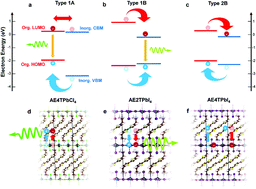
Mater. Horiz., 2019,6, 1707-1716
https://doi.org/10.1039/C9MH00366E
Phenanthro[9,10-d]triazole and imidazole derivatives: high triplet energy host materials for blue phosphorescent organic light emitting devices
A class of wide bandgap host materials is introduced as an alternative to carbazole-based hosts to enhance the efficiency and transport properties of organic light emitting diodes (OLEDs).
![Graphical abstract: Phenanthro[9,10-d]triazole and imidazole derivatives: high triplet energy host materials for blue phosphorescent organic light emitting devices](/en/Image/Get?imageInfo.ImageType=GA&imageInfo.ImageIdentifier.ManuscriptID=C9MH00195F&imageInfo.ImageIdentifier.Year=2019)
Mater. Horiz., 2019,6, 1179-1186
https://doi.org/10.1039/C9MH00195F
Improving the photoluminescence quantum yields of quantum dot films through a donor/acceptor system for near-IR LEDs
The PLQE of QD films can be increased by the incorporation of a relatively small fraction of well-passivated acceptor QDs.
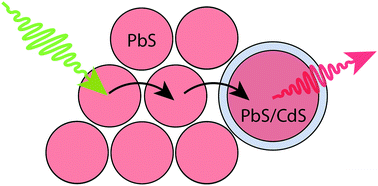
Mater. Horiz., 2019,6, 137-143
https://doi.org/10.1039/C8MH01122B
About this collection
Guest Edited by Materials Horizons and Nanoscale Horizons Community Board members Xiaolu Zhuo (CIC biomaGUNE, Spain), Li Na Quan (Virginia Tech, USA) and Qingchen Dong (Shanghai University, China).
Nowadays, optical and photonic materials are closely related to technological progress and are responsible for the growth of entire industries. Accordingly, various materials based on different properties have been widely used in optoelectronic devices or used as low-loss dielectrics for a range of vital optical and photonic components across the infrared wavelength range. In this collection, we have compiled a list of communications and reviews about the applications of optical and photonic materials in various fields, including luminescence, detection, photovoltaics, photodynamic therapy, optical sensing, bioimaging etc. We hope that this collection will bring new inspiration and thoughts to researchers in the field of optoelectronic technology.